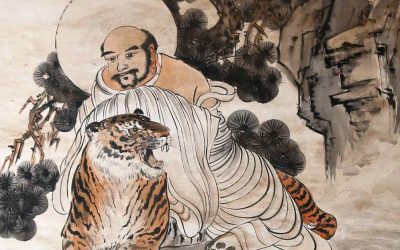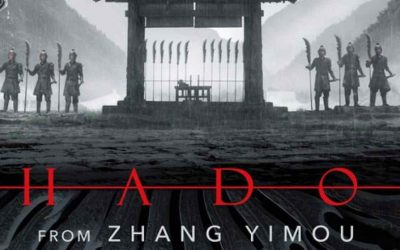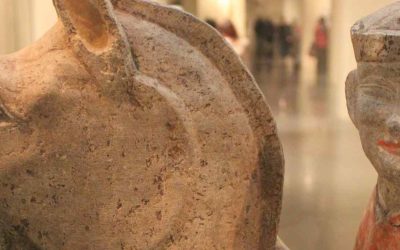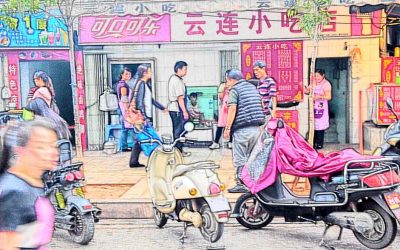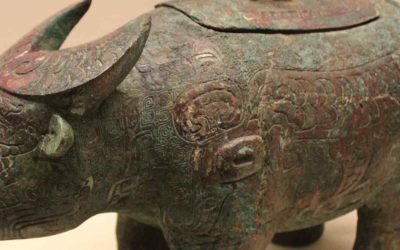The truth about the Great Wall
What would later come to be known as the Great Wall formed as a response to increased Mongol raiding after Esen was killed in 1455. Having failed to capitalize on the capture of Zhengtong, Esen lost the political momentum that had held the disparate Mongol groups together. The ensuing civil war spread into Chinese territory as warring factions sought economic resources to support their military efforts. One faction moved into the Ordos region, now no longer supervised by a Ming garrison, placing the Mongols squarely against Ming territory. The Mongols still wanted to present tribute, and receive gifts in return, and to trade with the Ming; failing that, they raided. Meanwhile, the Ming court was Itself distracted by Zhengtong’s return to power in a coup d’état in 1457. Jingtai died of illness or was poisoned, and Zhengtong resumed as emperor with a new reign period: Tianshun.
It was difficult to establish a consistent policy toward the Mongols given their ongoing wars, a situation further exacerbated by Tianshun’s weak leadership. A proposal to launch a campaign to retake the Ordos and establish garrisons, fortified positions, and agriculture, and so maintain control of the area, was approved, but nothing came of it. Further proposals for offensive action were sanctioned and left unfulfilled. In the interim, some commanders suggested pulling back to more hilly areas to the south that were easier to defend. This too was rejected. In 1471, Yu Zijun submitted a plan to build wall between Yansui and Qingyang to aid in defense.
A wall-based defense was expensive to construct and of questionable effectiveness. Yet the court did not have the will to devote the economic and military resources necessary to launch its desired offensive. Wall building won out because it was cheaper than any offensive; the first two long walls were finished in 1474, one 129 miles long and the other 566 miles long. Over the next century more and more walls were built; in many places there were actually two lines, with forts and watchtowers, evolving into what we now know of as the Great Wall. Although the walls were useful, they were never intended as a complete solution to the Mongol problem. The difficulty was that the same economic, political and military problems continued to obtain, leading successive generations through the same debate that put additional resources into wall building. The short-term question was how to make the wall system more effective, since the long-term problem of the Mongols could not, apparently, be solved.
Peter Lorte. War, Politics and Society in Early Modern China 900-1795. Routledge. London and New York. 2005. P. 124
About me: I have spent 30 years in China, much of the time traveling and studying this country’s culture. My most popular research focuses on Chinese characters (Chinese Characters: An Easy Learning Method Based on Their Etymology and Evolution), Matriarchy in China (there is a book with this title), and minority cultures (The Naxi of Southwest China). In my travels, I have specialized in Yunnan, Tibet, the Silk Road, and other lesser-known places. Feel free to write to me if you’re planning a trip to China. The agency I collaborate with offers excellent service at an unbeatable price. You’ll find my email below.
Last posts
What are four tigers doing in a Chinese Buddhist Temple?
What are four tigers doing in a Chinese Buddhist Temple? After visiting the Yunnan Provincial Museum, with its exuberance of images of tigers and bulls I strolled around in Guandu Old City. The streets were full of people and I entered the Fading Temple to enjoy the...
Shadow – A Film by Zhang Yimou
Shadow - A Film by Zhang Yimou Zhang Yimou leads one of the most consistent and brilliant careers in the cinematography of China, and with The Shadow (Ying) he delights the viewer again with a beautiful and surprising story, based on a very original script, and that...
The horse in the Chinese horoscope
The horse in the Chinese horoscope The horse is one of the animals of later incorporation into Chinese culture. If, as some scholars say, the system of 12 animals in the Chinese horoscope originated in the peoples who lived in the north, in the steppes and deserts...
The rat in the Chinese horoscope
The rat in the Chinese horoscope The rat for the Chinese is an animal to which are associated some positive and some negative qualities, in fact it is considered capable of carrying out numerous enterprises, not in vain it was the first animal to be assigned a sign of...
An oriental interpretation of dreams
An oriental interpretation of dreams Last week, in a book about the Hani minority in the remote Jinping region, one of the authors devoted part of his article on divination to dream interpretation among the Hani. I translated it, added some comments and published it...
What does it mean to dream of a cow in China? We tell you here
What does it mean to dream of a cow in China? We tell you here In the last few days I have stumbled upon several documents dealing with dreams in China, and some with certain fragments explaining, in particular, the meaning of dreaming about a cow. One of the most...





